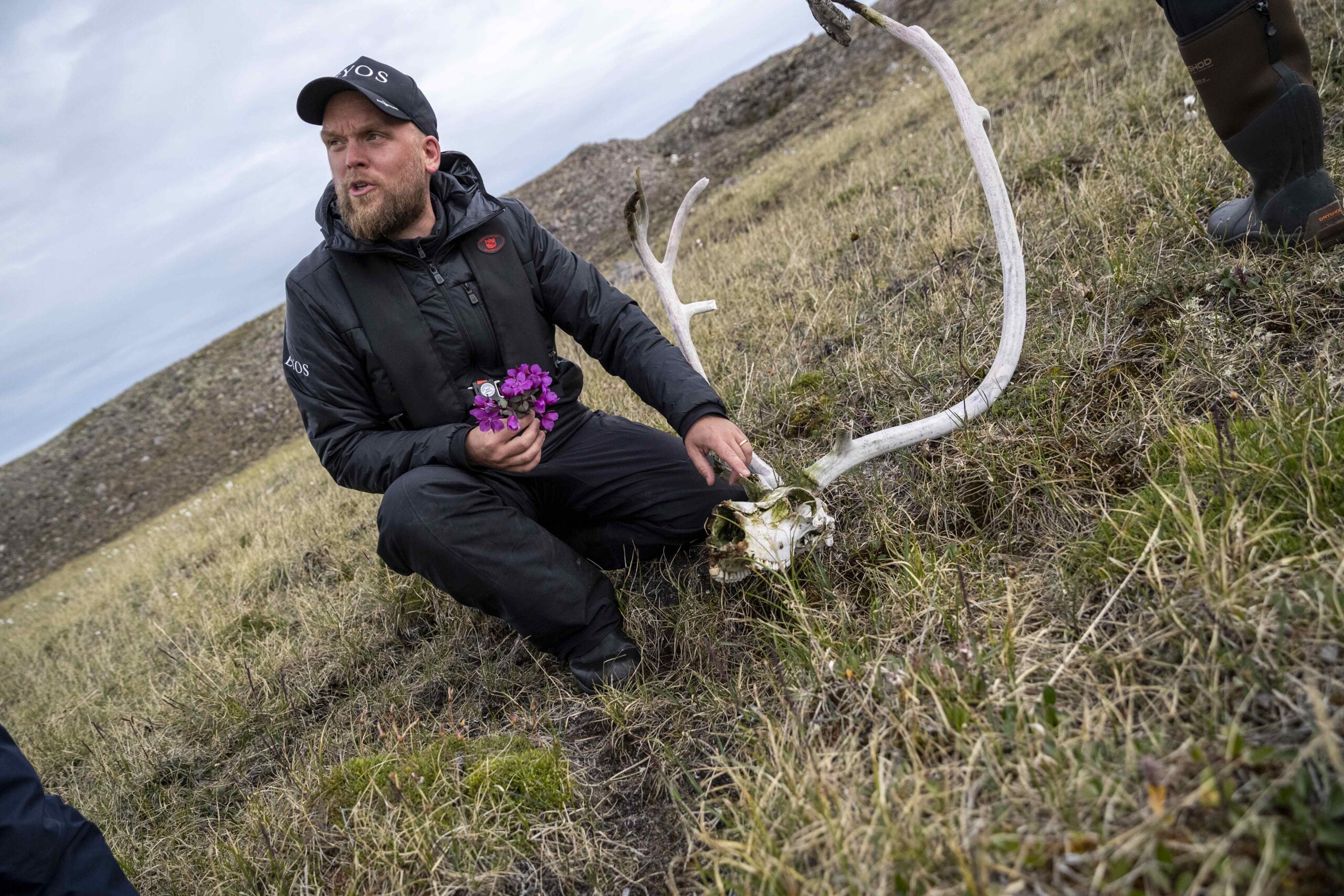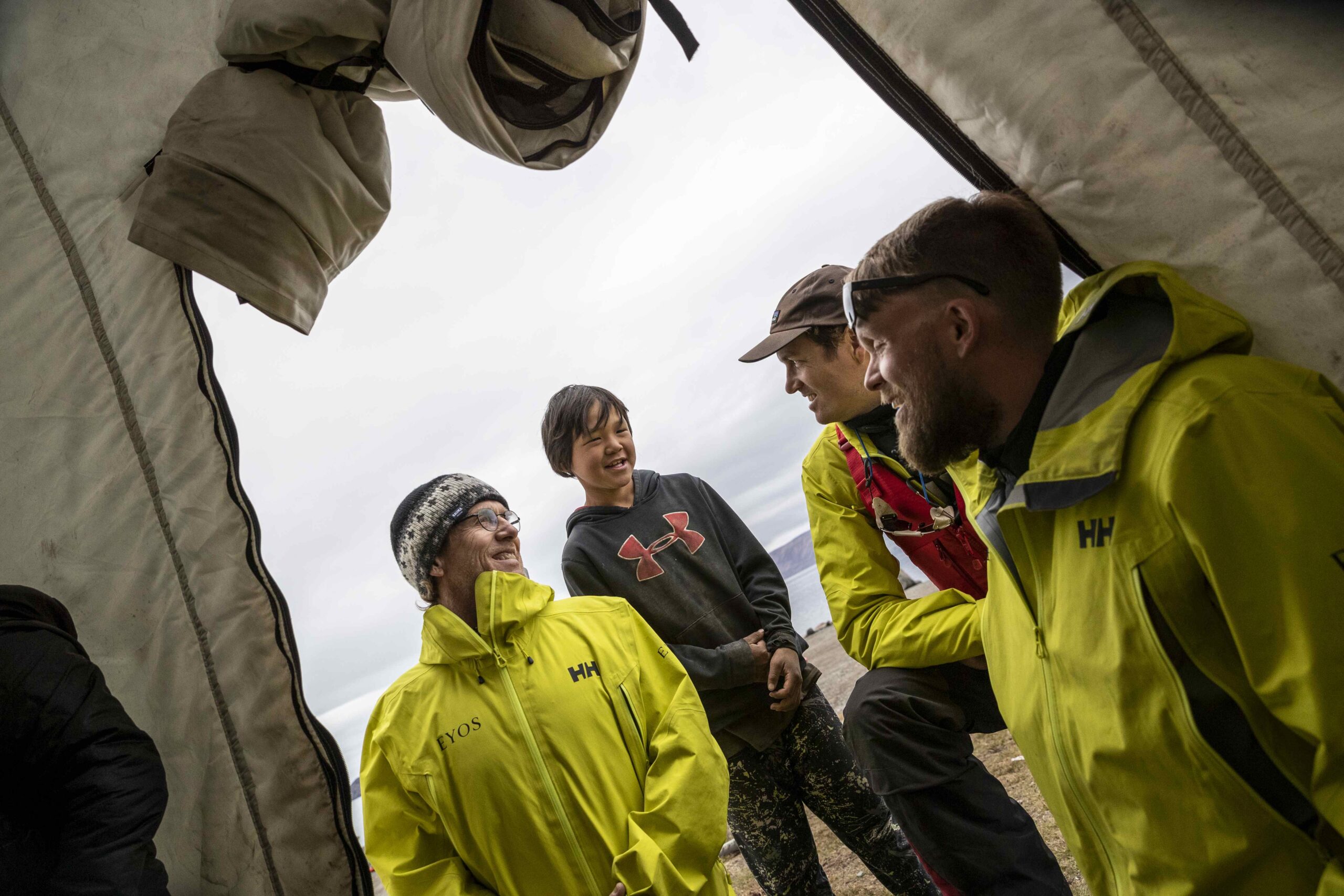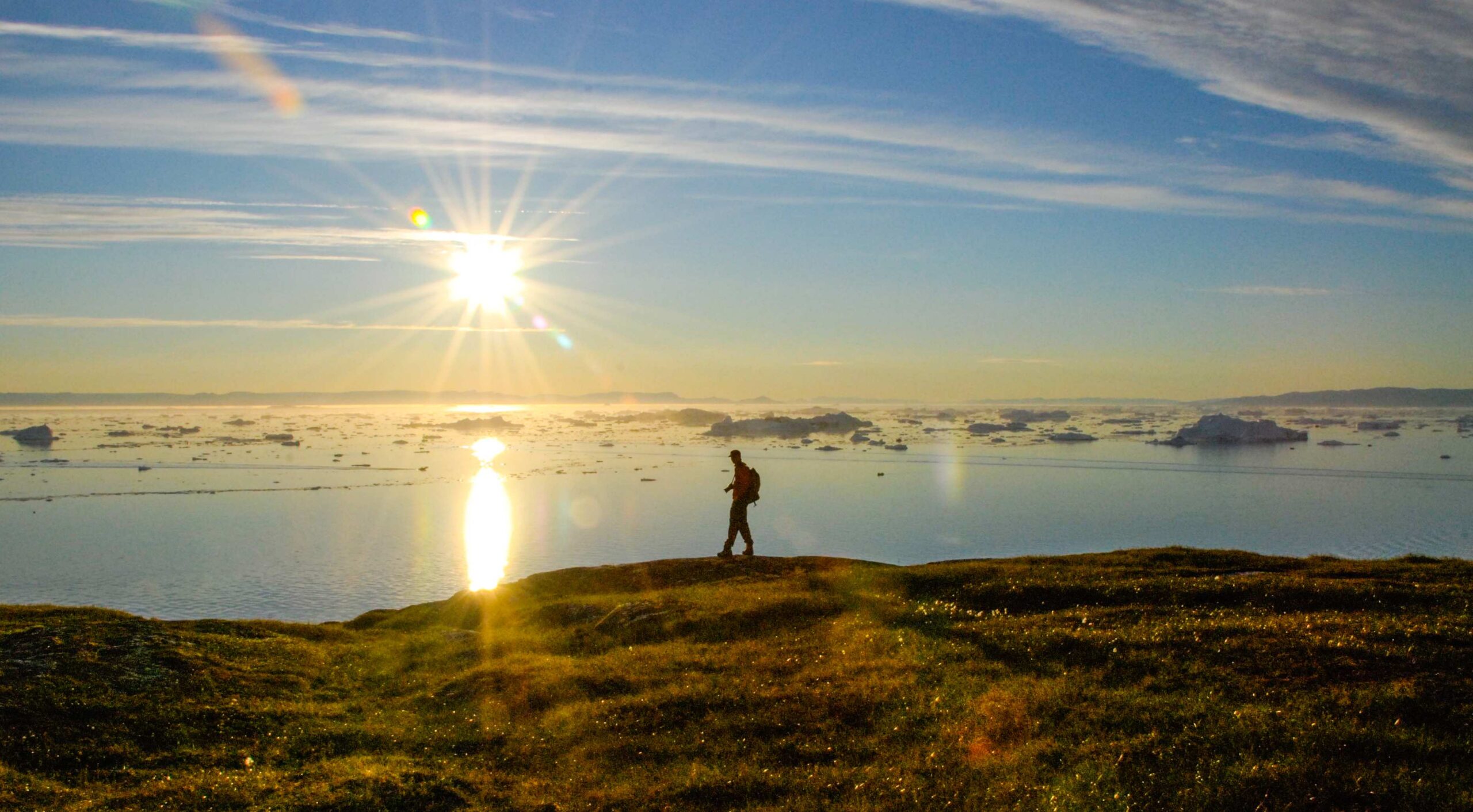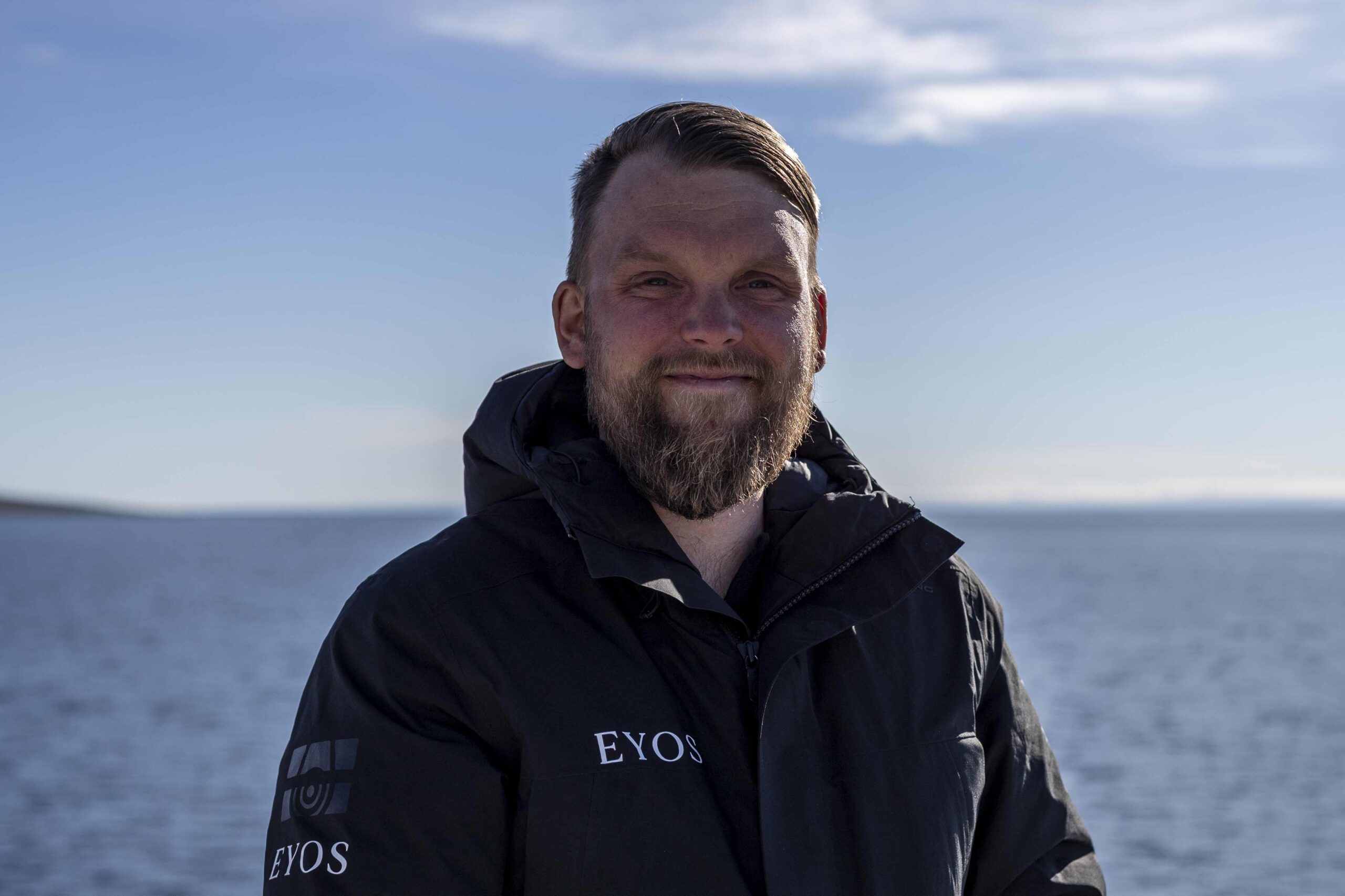Kasper Jæger is an expedition leader with 15 years of experience in polar regions and a fellow of the Royal Geographical Society. Navigating the sea ice of the Northwest Passage, mushing across the Arctic landscape with a team of sled dogs, and exploring the diverse wildlife of the South Pole are all within a normal day’s work for this seasoned expert. Join us for a conversation about his time spent in some of the world’s most remote and exciting regions.
- Can you tell us a bit about how your journey to guiding began?
I kind of “fell into” guiding through a love for the outdoors that is naturally built into you as a Nordic person. From a young age, I gravitated towards jobs that allowed me to make a living outside in the mountains. It all came together in 2006 when I got an opportunity to travel to Greenland and work for a local guiding company. Hiking, boating, and whale watching were suddenly my day-to-day existence. Since then I have been very fortunate to be able to keep on pushing ahead into more and more amazing adventures.

- What initially drew you to the Arctic and Antarctic regions, and how has your perception of these environments evolved over time?
I grew up in a family home with images of my Grandfather sitting on a dog sled in front of an iceberg or hiking on a mountain with a glacier in the background. These images were a very large part of how I saw my grandfather and why I looked up to him as a man of adventure and bravery. The stories he shared with me were the initial pull towards the north, after that, I have just fallen completely in love with all of the histories that I continue to learn about. How the Inuit were able to make a stone age living in Arctic Canada or how it must have been to be an early 1900´s explorer trying to push towards the unknown in the polar ocean, it’s all just so fascinating and unlike any other geography.

- You’ve been lucky to spend some time with the Sami of Northern Norway. What role do indigenous cultures play in your understanding of and approach to guiding in these regions, and how do you incorporate their perspectives into your work?
I use the cultures of the Arctic as a foundation for all of my guiding. Both in Inuit country and Sapmi country, these cultures make up an absolutely fundamental part of our understanding of the places. So I make great efforts to convey how these cultures have made it possible for people to make the most inhospitable places on the planet into their place of living and thriving. In practical terms, I might opt to take my guests to places that hardly any other vessels go or to visit far away settlements or historical sites, because I see great benefit both to the local communities and to our guests to be able to “get a little further under the skin” of the places we visit. The experiences we have had there are some of the most powerful of any I’ve had in the field.
- What are some of the biggest misconceptions people have about polar climates, and how do you address them during your expeditions?
Most people are surprised to find that the weather is often very pleasant and can even be too warm! It’s not just a harsh and barren icescape. I have sat on a mountain top in glorious sunshine, with my jacket off and sweat in my eyes as all if my guests carry large down parkas with them the whole way up. During the Arctic/Antarctic summer you should always be prepared for sudden weather changes, but packing with layers and not one single massive coat is a top tip.

- In your opinion, what are the most significant environmental challenges facing the polar regions today, and how do you integrate awareness of these challenges into your guided tours?
Over the course of almost 20 years, I have seen the changes happening to glaciers firsthand. The larger scale changes, though, are much less visible. Weather patterns are changing and becoming more unstable, we are getting more rain or snow, and we are getting storms from directions that we never saw wind from before. This is especially true in the polar regions. To convey these larger changes, my starting point is always providing the context of human history. One great example is traversing the Northwest Passage in August/September. Now, it is possible to sail this legendary route without seeing much ice. But if you go back and look at Roald Amundsen’s books about the same trip a century earlier and see how they had to battle the sea ice the entire summer, it helps bring the present-day experience into context. These historical contexts combined with the first-hand experience of an expedition to these places is one definite way to relate the terms of climate change. Seeing it and learning about it yourself is always more impactful than complicated graphs and climate models.
